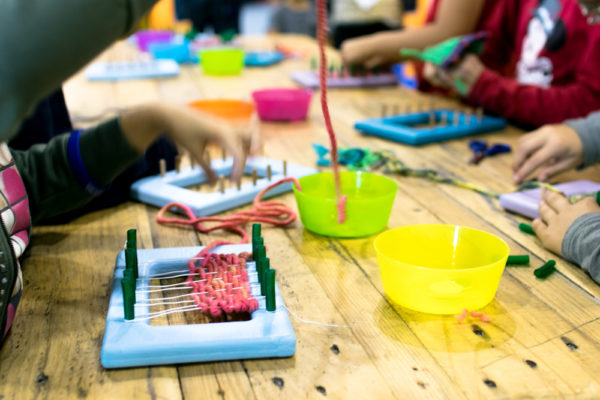The benefits of hands-on, active learning are firmly established, yet a lot of difference exists between being able to touch something and being able to create something. The latter allows students to practice skills in demand in the modern economy.
The exhibitor floors at ed-tech conferences provide an inspiring snapshot for the rise of skills-based learning options and environments across the American educational landscape. Educators and schools are realizing they need to provide more experiential learning experiences for the next generation of makers. One way is through learning environments called makerspaces.
What is a Makerspace?
A makerspace is an environment that students–or “makers”–use to collaborate and experiment freely. Containing 3D printers, laser cutters, and soldering equipment, this space may look reminiscent of a NASA laboratory. A makerspace can also be quite basic, using already-available school supplies such as cardboard, clothespins, and art supplies. The goal is to allow students to explore the process of making something utilizing their creativity.
Why Should You Consider Starting a Makerspace?
Makerspaces are popular because they incubate STEM (science, technology, engineering, and math) skills, which are marketable proficiencies for students in the 21st century economy. Aside from STEM, makerspaces also tend to be areas for collaboration, critical thinking, and creativity – skills used by all students in the world of college and career.
What Does a Makerspace Look Like?
As mentioned, a makerspace can be as high-tech or low-tech as you like. The important part is to provide a safe, collaborative environment.
Furniture should be flexible and durable, with the ability to transition for various tasks. It should also allow for movement as students and the teacher demand. Because makerspaces provide students with a wealth of tools, any furnishings should allow for enhanced organization of a variety of objects.
If your makerspace is of the high-tech variety, furnishings should also provide plenty of options to power tools and devices, as well as easy access to electrical outlets.
In many schools, media centers and tech savvy media specialists are leading the charge by facilitating problem-solving, design-thinking projects in varied dynamic makerspace centers within a media center. Areas of discovery may include robotics, movie making, gaming, circuitry, LEGOs, music production and construction while utilizing high tech tools such as 3D printers and graphic design programs.
(Next page: Makerspace ideas and considerations for the new school year)
Quick Makerspace Ideas for the New School Year
The best makerspaces try not to pigeonhole themselves into one set of activities. A makerspace with just circuitry to play with is just an electrical engineering lab. Great makerspace projects are mashups from all the disciplines. Here are some important considerations as you develop your makerspace:
- Art rooms have been makerspaces for decades and can be your greatest resource in this venture. They already feature large, durable tables that are perfect for collaboration and flooring that promotes safety. Additionally, art teachers are experienced in allowing students to explore their creativity.
- Try out new tools like the 3Doodler pen or Califone Listening First headset to bring activities to life across a wide range of subjects. When creating lessons to accompany these tools, you don’t have to start from scratch. There are many ideas, projects, and lesson plans available, such as this resource.
- Don’t forget our students with special needs. Incorporate as many tools as possible for children with a range of abilities so that all students can grow in makerspaces. Skills testing is particularly useful for students with special needs. Also, keep the floor free of obstructions, make the space flexible, make sure all sharp objects are sheathed or guarded at all times, and provide quiet spaces.
- Although 3D printers and power tools aren’t suitable for young learners, makerspaces can work in early childhood. The process of experimenting and building a solution to a problem can happen with low-tech materials like recycled boxes and paper towel rolls or building bricks and other manipulatives. Making is a way of bringing engineering to young learners within concrete experiences to help build an understanding of abstract science and math concepts.
Creativity is a key 21st century skill! The sky is the limit, but the more varied materials you provide, the more the students’ imagination is unlocked. With imagination comes success in all the disciplines.
- How digital tools and AI can enhance social studies - April 23, 2024
- Using universal screening to improve student well-being - April 22, 2024
- 3 ways to avoid summer learning loss - April 19, 2024


